Sites
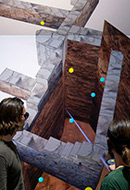 Science, Faith, and Biblical Archeology
Science, Faith, and Biblical ArcheologyMonday, January 17, 2011 by Alex Joffe | Jewish Ideas Daily » Daily Features
Biblical archeology was born out of twinned desires: to "illuminate" the world of the Bible and, ultimately, to prove the truth of the Word.
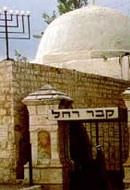 Why Rachel’s Tomb Matters
Why Rachel’s Tomb MattersFriday, November 19, 2010 by Alex Joffe | Jewish Ideas Daily » Daily Features
All cultures build on what came before them. But how they treat the past is a measure of cultures in the present. The treatment by Muslims of Rachel's tomb, lately much in the news, is a case in point.
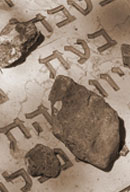 Cemetery Politics
Cemetery PoliticsWednesday, September 1, 2010 by Allan Nadler | Jewish Ideas Daily » Daily Features
Among the many bones its various enemies pick with the Jewish state, one has been much in the news lately: bones, very dry bones, residing in cemeteries both real and imagined all across the country.
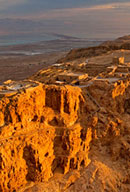 Digging King Herod
Digging King HerodFriday, August 20, 2010 by Aryeh Tepper | Jewish Ideas Daily » Daily Features
King Herod was a Jew of doubtful origin who ruled Israel in the years 40-4 B.C.E. During this same period, the Roman republic was being replaced by the Roman Empire with its vast expansionist aims. Relying on Roman support for his power, Herod was, in effect, Israel's little Roman emperor. And he played the part, bringing administrative order and economic prosperity to the country and creating hugely ambitious architectural projects. In the Roman way, he was also cruel, paranoid, and thorough, killing his wife, three sons, and an assortment of other relatives and confidants.
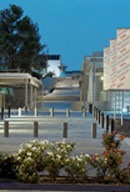 The New Israel Museum
The New Israel MuseumFriday, August 13, 2010 by Aryeh Tepper | Jewish Ideas Daily » Daily Features
An expanded and revamped Israel Museum re-opened to the public in late July after three years of renovations. While the modest architecture remains as it was, the modernist cubes rolling with the Jerusalem landscape, the jumble of buildings has been streamlined: 25,000 square feet of exhibition space have been added, but the number of items on display has been reduced by a third. Overall, the design is significantly more user-friendly, with a spacious new entrance hall leading to the museum's remarkable collections, including its three most significant wings: archeology, Jewish art and life, and fine art.
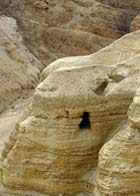 A Dead Issue?
A Dead Issue?Monday, February 15, 2010 by Elli Fischer | Jewish Ideas Daily » Daily Features
Since the electrifying discovery of the Dead Sea Scrolls at Qumran in the late 1940's, the scholarly consensus has been that they were produced by the Essenes, a small Second Temple-era Jewish sect known to us from Josephus. Last year, a book by Rachel Elior, Memory and Oblivion: The Secret of the Dead Sea Scrolls (Hebrew), upended this seemingly settled issue by contending that, in fact, the Essenes never existed. Elior's revolutionary thesis, argued with force and stridency, has been discussed in major mainstream publications from Israeli newspapers to Time magazine. But the controversy, and clashing assessments of her achievement as a historian, have...
Editors' Picks
Disjecta Membra Benjamin Balint, Los Angeles Review of Books. Not for nothing was the Cairo Genizah called "the Living Sea Scrolls": its discoverers revolutionized the study of Mediterranean Jewish life at the very moment that it was drawing to a close.
Ardor, or Architecture Yonatan Silverman, Jerusalem Post. The holiness of Jerusalem in the Muslim tradition owes less to the Koran than it does to the opportunistic building program of Jerusalem's eight-century Umayyad rulers.
Analyzing Ashkelon Sam Roberts, New York Times. Science is revolutionizing the study of ancient Ashkelon—revealing mysterious cylinders as parts of ancient looms, proving that what we thought were palaces may really have been stables.
Shrine Online Sohrab Ahmari, Tablet. Unable to restore a shrine with a prominent Star of David in Iran, a U.S. organization and an Iranian-American architect are reviving the site in cyberspace.
The Afghanistan Genizah Gil Shefler, Jerusalem Post. The scholarly world is abuzz over a cave filled with ancient scrolls that may be the most significant historical discovery in the Jewish world since that of the Cairo Genizah. (Hebrew report with video here.)
Found on Hanukkah Zafrir Rinat, Haaretz. Excavations near the Western Wall unearthed a rare clay seal that appears to have been used to authenticate the purity of ritual objects used in the Second Temple.
Elephants and Homo erectus Arieh O’Sullivan, Media Line. A cave near Tel Aviv may offer up evidence that modern man first emerged not in Africa but in the Middle East—because of a scarcity of elephant meat.
From Haran to Hebron Moshe Gilad, Haaretz. One anthropologist is on a campaign to mark the 1,200 kilometer path traveled by the patriarch Abraham through Jordan, Syria, Iraq, and Israel.
Holy Land Stonehenge Associated Press. In Arabic, the site's name means "stone heap of the wild cats." In Hebrew it is known as the "wheel of ghosts." Just what is the mysterious prehistoric structure?
Who Lived in Qumran? Biblical Archaeology Society, Bible History Daily. An architectural analysis of the area where the Dead Sea Scrolls were discovered supports the identification of the community as a Second Temple-era Jewish sect known as the Essenes.

